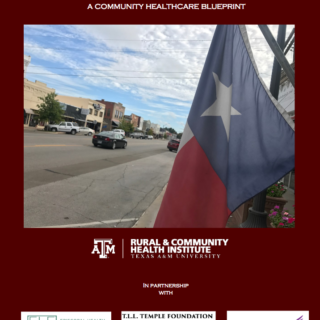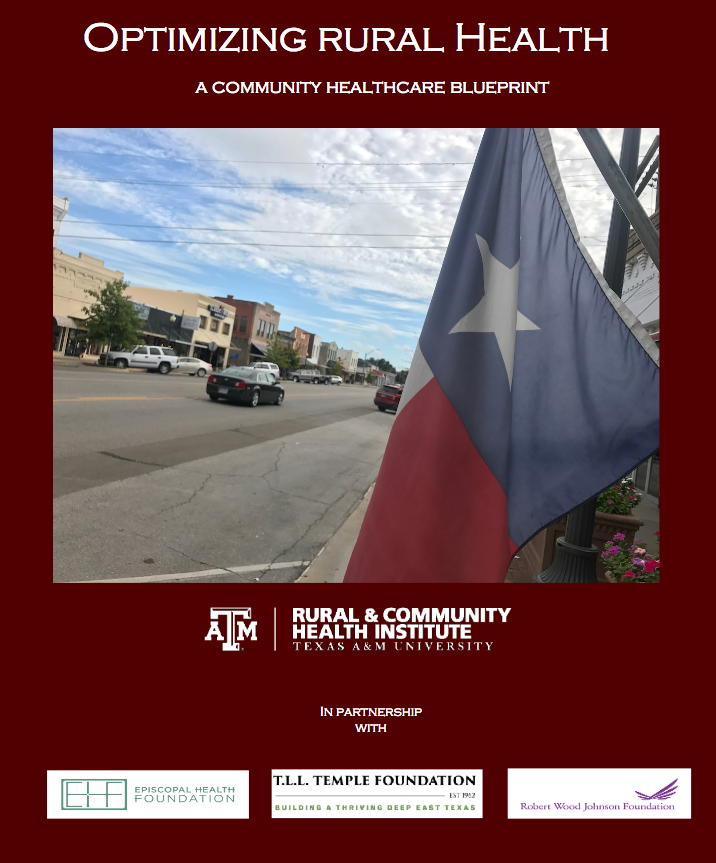A new report from the A&M Rural and Community Health Institute at the Texas A&M University Health Science Center outlines new ways forward for rural Texas communities facing or experiencing a hospital closure. The Episcopal Health Foundation (EHF), Robert Wood Johnson Foundation and the T.L.L. Temple Foundation sponsored the report.
Through a series of focus groups and other research, a Texas A&M team, in collaboration with EHF, compared the healthcare needs of three communities with the current services available. What they found was that the true issue for rural health care is not necessarily the lack of a full-service hospital nearby, but instead the need to work with communities to balance needs, capacities and resources to optimize health care delivery and preserve access to health care.
The report includes a blueprint for each participating community based on their individual needs and circumstances. Additionally, the A&M Rural and Community Health Institute prepared community presentations to share research results and answer community members’ questions.
“The goal is ‘right-sizing’ healthcare delivery in rural communities in a way that provides quality services for families living there,” said Elena Marks, EHF’s president and CEO. “In some areas that includes a hospital, but these blueprints show that communities may be able to find new and sometimes more effective ways of offering affordable access to the services families need the most.”
Although each community is unique, the commonalities discovered in this research are “lessons learned” for rural communities in Texas and across America.
“Rural communities in Texas are as unique as the residents themselves, and so there isn’t one way to optimize their residents’ health,” said Nancy Dickey, MD, president emeritus of the Texas A&M University Health Science Center, executive director of the A&M Rural and Community Health Institute, head of the Department of Primary Care at the Texas A&M College of Medicine and lead author of the report. “Perhaps there are no right or wrong answers at all, but instead steps tailored to and supported by each community to ensure access to care.”
For example, in one community, the hospital had closed, but was in the process of reopening. Therefore, the plan for that community involved ways to make the reopening successful and involve the community in the process.
In another community, in which there was no plan to reopen their closed hospital, the blueprint suggested ways to prioritize needed services, such as mental health and sports medicine, to help advance the health of the community even without the inpatient beds that were in the now-closed hospital.
The themes of this recent research are intertwined and can increase awareness and actions toward optimized rural health care. The report notes that if communities can be aware of their hospitals’ vulnerability, they can be proactive to identify options for health care access.
“The question becomes, ‘How can we deliver care in rural areas on a high-quality basis and do so even if there is not a hospital in town?’” Dickey said. “We need to be thinking about alternatives.”
Some of those alternatives might come from the rural ‘moonshot’ announced in November that will allow the Health Science Center to identify and implement solutions for rural and underserved communities, thanks to a $10 million commitment from Blue Cross and Blue Shield of Texas.
The Rural and Community Health Institute will also be amplifying these research results from Texas to a much broader scale: the nation.
This fall, the Rural and Community Health Institute was awarded a five-year grant from the Vulnerable Rural Hospitals Assistance Program, funded by the Health Resources and Services Administration (HRSA), an agency of the U.S. Department of Health and Human Services. The grant funded the creation of the Center for Optimizing Rural Health, a technical advisory center for the nation, to actively help rural communities maintain their hospital or create other means of access to care after hospitals close.

